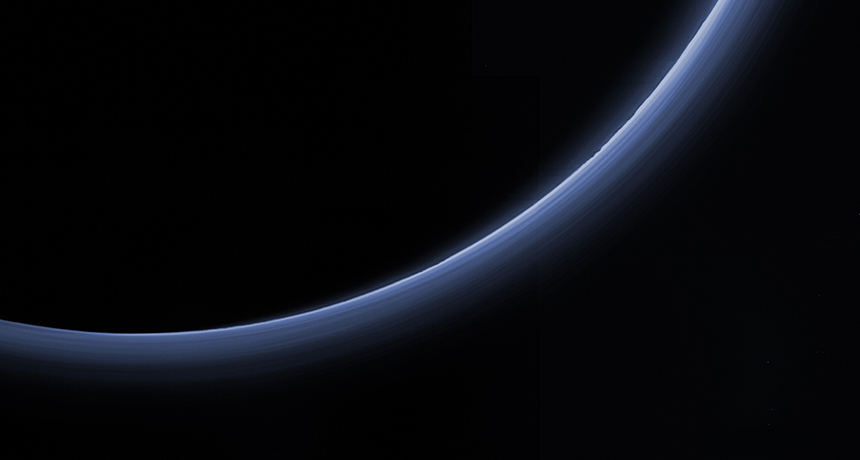Get your Pluto trivia down cold
Palooza of papers recap data collected from New Horizons flyby

BANDS OF BLUE Blue skies and an onionlike layering of hazes envelop Pluto, as seen in this parting image from the New Horizons spacecraft.
NASA, JHUAPL, SWRI